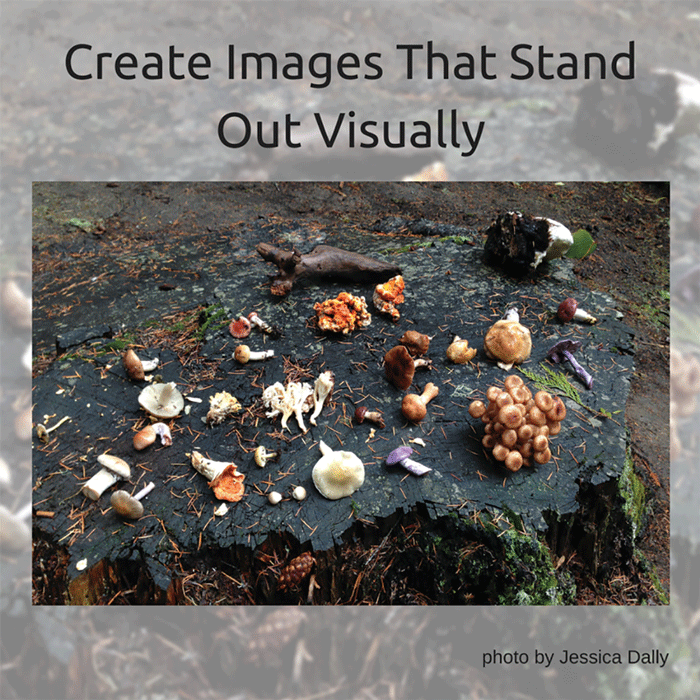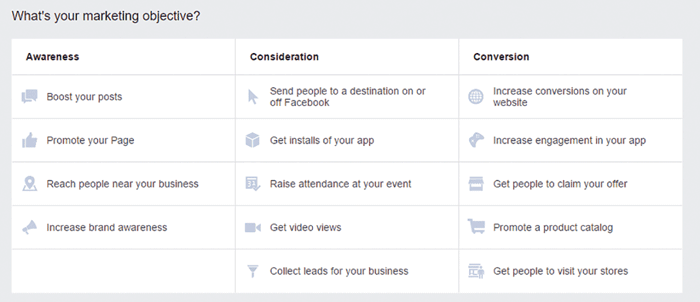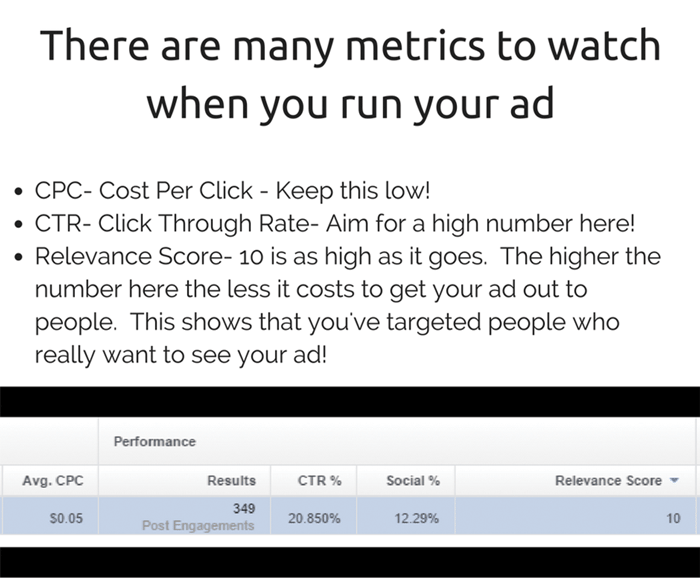By: Jessica Dally
Facebook marketing and the dreaded Facebook algorithm.
What it is, why it matters, why people care. It has changed over the years. No longer do fans see everything pages or friends post. People complain, both customers and business pages but they shouldn’t and here’s why . . .
In the last article, we talked about many different social media platforms available to small business for marketing. This time we’ll discuss the big player, Facebook.
In my last position I had the great benefit of having full discretion over a six-figure marketing budget. I could choose to spend a whole lot of money anywhere I wanted to. And indeed I got to experiment and see what worked over a wide array of platforms and marketing options.
Across the board, I found that bang for the buck, Facebook outperformed every other option every single time. Sure, you can get a LOT of business using Google Adwords, but you’re going to spend a lot of money doing it. What is a lot of money? On the low end, we’re talking $1000 a month. Many big players spend $15000.00 a month or more. That’s the correct number of zeros folks.
Billboards, print advertising, television, radio. Each and every one of these options costs and costs BIG. But Facebook, when done well can cost you almost nothing. In my business, I sold $30k worth of product with one $10 ad. You’re going to be hard pressed to find another advertising platform that will have that rate of return.
Of course, there is no easy button on Facebook advertising. You can’t simply make an ad, press run and watch the money roll in. Every aspect of your ad has to be correct for it to work, but when done well Facebook ads work far better than any other platform out there at this time.
But why advertise, isn’t Facebook free?
Yes, and no. Let’s take a simplified look at Facebook evolution.
When Facebook first came out it was just aimed at people. It was you and your friends, connecting on a website to share pictures of your kids, your dinner, your favorite recipes, a story from the news, whatever. But like anywhere people congregate, businesses realized this was a prime advertising opportunity, and soon a typical profile was no longer a person but a business. Facebook realized this was an issue and created pages so companies could create an identity that wasn’t a “person.” Enter “pages,” now used for community events, clubs, celebrities, businesses, government, etc.
In the early stages everything got equal play. When your friend posted something, you saw it. When a page you liked posted something you saw it. Period. There was no way to hide anything. And that was a bit of a bummer. Because let’s face it, we all have those family members we have to connect to, but we really don’t want to see ALL THE TIME. No Uncle Ed, I don’t want to see that post about what you did every other minute.
So Facebook started allowing you to change how much you saw from pages and people. And you still can, both from people and pages. But eventually, it also realized that it could do some of this work for you.
All of this is what is called the Facebook Algorithm and it is set up for one reason and one reason only. NO, it’s not simply to sell businesses ads though many frustrated business owners will tell you that’s the case. It’s there for one reason. Remember, Facebook is about connecting people to other people. It wasn’t built so you could sell your product. If Facebook makes it easy for every spammy business to push bad ads to everyone eventually all the actual people will go away and there will be no business to be done anymore.
It is in Facebook’s best interest, and I’ll argue ours too, to make sure that what gets out to people is content people like. So that’s what the algorithm does. It pushes content to people that they want to see, and it doesn’t push anything people don’t want to see. It measures that by likes, clicks, comments and a bunch of other complicated rules. Basically, if you are sharing content no one cares about it’s not going to share it with your fans. If you are sharing stuff all of your fans love, it will show it to a lot of people.
So why ads?
Do ads help you get past the algorithm? Yes and no. Facebook shows ads to people in almost the same way it shows unpaid content. If your ad is great and targeted well it will show it for less money. If you target poorly and make a bad ad, it will cost you more to show it to the same number of people.
At first, this may sound mean, but when you think about it, it’s actually pretty great. Bear with me for a second. We’ve all had ads shared with us (be in on social media, via email, or on regular websites) for products we don’t care about or like in any way. Those ads are annoying. They detract from our experience of that website and can be distracting.
And yet, every once in a while, you get an ad for something that you actually want. You may not buy it right away, and yet sometimes it is actually appreciated. A much lower price for something you were looking for, something you didn’t know was out there, a group you would like to join. Facebook realizes that one type of ad detracts from Facebook while the other does not. And it’s going to make an advertiser who does bad work pay. Personally, I appreciate that!
So how do you do good work?
There are three aspects to any and all Facebook ad creation.
Image – remember the last articles where we talked about tools? This is where you pull out Canva and Pixlr and create a great image for your ad. Use VERY little wording as Facebook does not like text in your image. Make your image stunning. Using those tools it’s not nearly as hard as you think. But remember to tie your image to your ad.
Wording – What are you selling? What is your unique value proposition? What does unique value proposition mean? It’s OK not to know . . . it’s that thing that makes you and your product special. Is your honey local? Are you going to be at the farmer’s market this Saturday? Do you sell your beekeeping supplies locally (no shipping!), can you pollinate local fields in small quantities? Whatever it is you know what it is. Make sure your customers know what it is!
Targeting – This is the big one folks and where people really mess things up. Your natural tendency will be to cast a wide net. But here’s the thing about big nets. They cost big money. Your job is to do the opposite. Cast a small net. Who is your ultimate fan? Who is that person who is most passionate about your product? If you’re a local shop, don’t advertise to everyone in your state. Advertise close in. Don’t advertise to anyone who MIGHT keep bees, advertise to those who absolutely do.
The tighter your target market, the less it costs you. More important, when you advertise to those people who are likely to be huge fans, they will advertise for you into the markets you’d hit with a bigger net without costing you big net money. Think about it this way, you get to the people who are knowledgeable, and when their friends want to know where to get local honey, buy beekeeping supplies, learn about a local club, etc., they will advocate for you.
Finally, when it comes to targeting, most of the time you should not be targeting your current fan base on Facebook. You can exclude your current fans. Use your email list or create a separate ad to target these fans. Don’t preach to the choir with your ads. Seek out new business.
Run your ad
Now that your ad is running how long do you run your ad? When you’re only spending $10 you simply can’t run an ad for months at a time, and you don’t want to. For most businesses, running ads for a week, maybe two is often the optimum amount of time. Remember, you’re looking for power users, those who will be very excited about your product. You do not need to oversaturate them with ads. No one likes being inundated with advertising.
So hit them with an ad and then stop before they’re bored. Then either create a different ad with completely different content (and target to different people) or wait a bit before you advertise to this group again. You do not want to be the person who annoys people with your ads.
Well folks, that’s the basics of a VERY complicated but exciting platform for small business. Those who use Facebook well can see an incredible amount of business growth without spending much money. It can be tricky to get to know what works for you. Experiment, look at the statistics Facebook gives you about your ad and change things up to make your ads better.
The key point is DO NOT spend a bunch of money on any single ad, especially while you’re learning. If it doesn’t seem to be working go back up to the three key aspects of your Facebook ad . . . there’s something that isn’t right there.
Good Luck!
Let me know what you try on twitter at @jessicadally or on Facebook at JessicaDallyConsulting.
SIDENOTE: There are a LOT of issues surrounding the control Facebook has taken over your Facebook feed. Suffice it to say that, should you want, you CAN make it so everything you have liked shows up in your feed. You won’t like it, I promise, but you can do it. You absolutely can craft your feed so it shows whatever you want. But that’s another article for another time.













